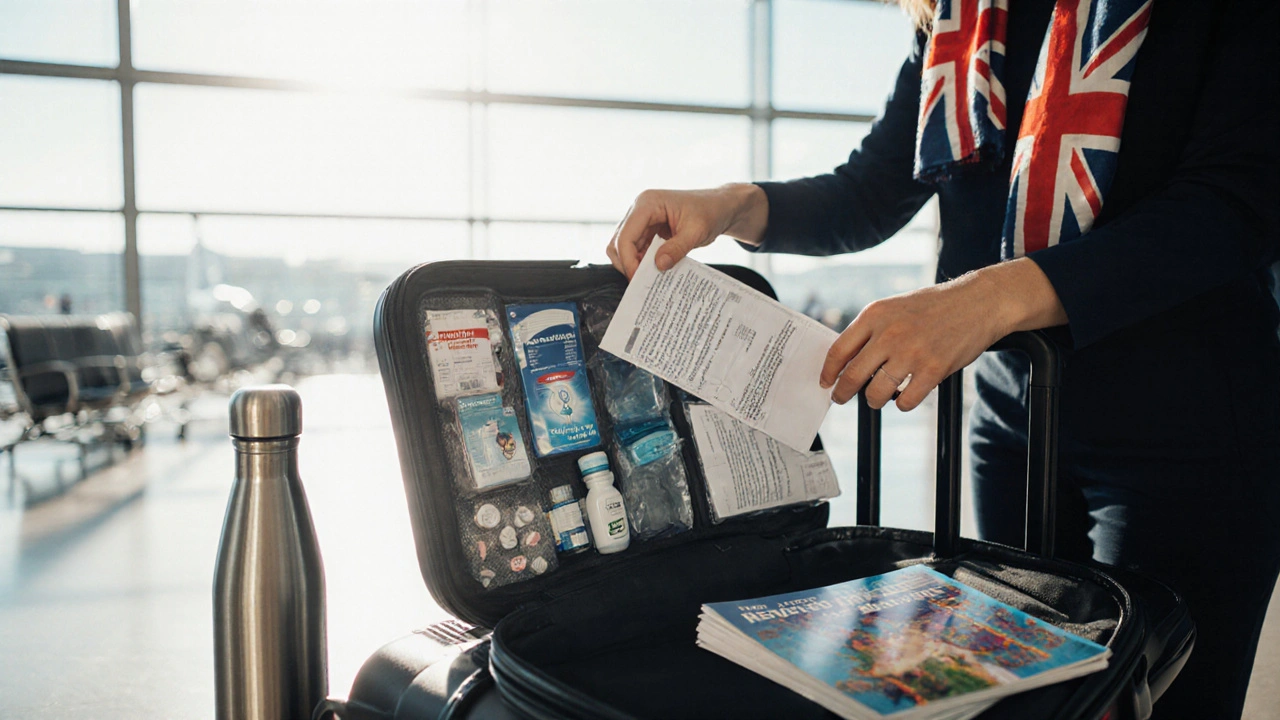Chronic Diarrhea Travel Tips: Stay Comfortable on Your Trip
Traveling with chronic diarrhea can feel like a hassle, but a few smart moves make the difference between an enjoyable trip and a miserable one. Below are practical steps you can take before you leave, while you’re on the road, and when you get back home.
Before You Go: Plan, Pack, and Prepare
Start by talking to your doctor. Ask for a clear treatment plan, a list of approved over‑the‑counter (OTC) meds, and a prescription in case you need a stronger drug. Get a copy of the prescription and a note explaining your condition – it helps at customs and when you need to fill a prescription abroad.
Pack a travel kit that includes:
- Loperamide (Imodium) for quick relief
- Oral rehydration salts or electrolyte packets
- Probiotic capsules you trust
- Any prescription anti‑diarrheal or antibiotic your doctor gave you
- Cheap, sealed water bottles or a reliable water filter
- Hand sanitizer (at least 60% alcohol) and antiseptic wipes
Keep the kit in a carry‑on bag so you always have it handy. Also, research the medical facilities at your destination – know the nearest hospital or pharmacy that accepts international prescriptions.
During Your Trip: Smart Eating and Staying Hydrated
Food is the biggest trigger. Stick to well‑cooked meals, avoid raw salads, and be picky about street food. If you must try local snacks, choose those that are hot, fresh, and served in a clean environment.
Drink only bottled or filtered water. Even if the tap looks clean, it may contain parasites that aggravate your gut. Use your water filter for any drinks you need to make on the spot.
Eat small, frequent meals rather than big ones. This helps your digestive system stay steady and reduces the chance of a sudden flare‑up.
When you feel the first sign of loose stools, take a dose of loperamide immediately. Follow up with an oral rehydration solution to replace lost fluids and electrolytes. Probiotics can also help restore balance, especially after a questionable meal.
Practice good hand hygiene. Wash hands with soap and water for at least 20 seconds before eating or after using the bathroom. When soap isn’t available, use your hand sanitizer.
When to Seek Help: Knowing the Red Flags
Most episodes will settle with OTC meds, but watch for warning signs that mean you need a doctor:
- Fever above 101°F (38.5°C)
- Blood or mucus in the stool
- Severe abdominal pain
- Dehydration signs: dizziness, dry mouth, or dark urine
- Symptoms lasting more than 48‑72 hours despite treatment
If any of these appear, head to the nearest clinic. Show your doctor the prescription note and your travel kit – it speeds up the process.
After you return home, schedule a follow‑up with your regular doctor. They can adjust your long‑term plan based on what you experienced abroad.
Travel with chronic diarrhea doesn’t have to ruin your plans. With a solid prep checklist, smart eating choices, and quick action if symptoms flare, you can enjoy new places without constant bathroom trips. Pack your kit, stay hydrated, and keep an eye on the warning signs – then focus on the fun part of traveling.
Traveling with Chronic Diarrhea: Essential Precautions and Tips for a Smooth Trip
Learn practical tips to travel smoothly with chronic diarrhea, from packing a medical kit and staying hydrated to choosing safe foods, insurance, and emergency plans.
